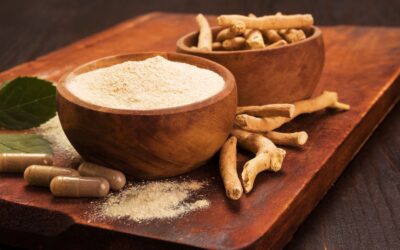AI Ayurveda Imma – Your Guide to Ayurvedic Living in the UK | Zen Wellness
Are you curious about Ayurveda and its secrets to optimal health? Then understanding the concept of Doshas is your essential first step! In Ayurveda, Doshas are considered the three fundamental energies or principles that govern every aspect of our being right from the moment we are formed as an embryo – physical, mental, and emotional. Think of them as the three forces of life that influence everything from our body type and personality to our susceptibility to illness.
Knowing your dominant Dosha is incredibly important if you’re interested in Ayurveda. It acts as a personalized blueprint, guiding you towards lifestyle choices that promote balance and harmony. By understanding your unique constitution, you can make informed decisions about diet, exercise, and daily routines that resonate with your inherent nature.
Imbalances in these vital energies can manifest as various physical and mental health issues. However, the beauty of Ayurveda lies in its holistic approach to restoring this balance through natural remedies, dietary adjustments, and mindful practices.
Dosha and Panchamahabhuta: The Elemental Connection 🌍
In Ayurveda, the entire universe, including our bodies, is composed of five fundamental elements known as Panchamahabhuta:
- 🌌 Aakash (Space)
- 💨 Vayu (Air)
- 🔥 Agni (Fire)
- 💧 Jala (Water)
- ⛰️ Prithvi (Earth)
These five elements combine in unique ways to form the three Doshas:
- Vata: 💨🌌 Primarily comprised of Air and Ether (Space), governing movement.
- Pitta: 🔥💧 Predominantly composed of Fire with some Water, governing transformation and metabolism.
- Kapha: ⛰️💧 Primarily made up of Earth and Water, governing structure and lubrication.
Understanding this elemental connection helps us appreciate how these basic building blocks of nature influence our individual constitutions.
The Three Doshas: Vata, Pitta & Kapha ✨
Let’s delve deeper into each of these fascinating energies:
💨 Vata Dosha: The Energy of Movement
- Elements: Air and Ether (Space)
- Qualities: Dry, light, cold, rough, subtle, mobile, erratic
- Functions: Governs all movement in the body – breathing, circulation, nerve impulses, muscle movement. Also linked to creativity and mental agility.
- Imbalance: Can lead to anxiety, insomnia, digestive issues, dry skin, and joint pain.
- Balancing: Nourish prana (life force), strengthen ojas (immunity), promote healthy digestion and elimination. Practices like warm oil massage (abhyanga), mindful breathing (pranayama), and following natural rhythms are key.
🔥 Pitta Dosha: The Energy of Transformation
- Elements: Fire and Water
- Qualities: Hot, sharp, light, oily, liquid, spreading
- Functions: Controls metabolism, digestion, body temperature, hormonal balance, and intellectual sharpness.
- Imbalance: Can cause heartburn, inflammation, ulcers, skin rashes, irritability, and excessive body heat.
- Balancing: Consume cooling foods, avoid spicy and oily foods, practice relaxation-focused yoga. Abhyanga can also aid digestion and detoxification.
💧 Kapha Dosha: The Energy of Structure
- Elements: Earth and Water
- Qualities: Heavy, cold, moist, slow, steady, soft
- Functions: Provides structure and stability to the body, lubricates joints, supports immune function, and promotes calmness.
- Imbalance: Can lead to weight gain, lethargy, congestion, mucus buildup, and feelings of heaviness.
- Balancing: Incorporate warming spices like ginger and cinnamon, engage in regular exercise to boost metabolism and digestion, and ensure proper rest and elimination.
Your Unique Blueprint: Prakriti and the Common Dwanda Nature 🧬
According to Ayurveda, each individual is born with a unique and inherent constitution called Prakriti. This is your natural balance of the three Doshas established right from conception. While all three Doshas are present in everyone, one or two will typically be dominant, shaping your fundamental nature and influencing your predispositions. In fact, the law of dominance suggests that in a given individual, one Dosha will often be most pronounced, determining the primary body type, with the other two acting as subordinate influences. For instance, someone might be predominantly Pitta (say, 60%), with Vata as a secondary influence (30%) and Kapha being less prominent (10%). This would result in a Pitta-Vata body type.
Interestingly, the Ayurvedic understanding reveals that most of us don’t possess a perfectly balanced Sama Doshaconstitution. Instead, a significant majority belong to Dwandaja Prakriti, meaning we have a combination of two dominant Doshas influencing our being. This interplay of energies creates a rich tapestry of individual variations.
Finding Your Doshas and Thriving in the UK 🇬🇧
To embark on your Ayurvedic journey to better health in the UK, the crucial first step is to find your Dosha!
Once you understand your dominant Dosha(s), you can begin to follow Ayurvedic principles and regimens tailored to your specific needs. This might involve adjusting your diet to favour certain tastes and avoid others, incorporating specific herbs and spices, adopting a daily routine that aligns with your Dosha’s tendencies, and practicing yoga or meditation styles that promote balance.
In conclusion, be healthy! Understanding your Dosha type is a powerful tool in your pursuit of well-being through Ayurveda. Remember that striving for Sama Dosha (balance of all three) is key. By finding your Dosha and following Ayurvedic principles, you can navigate life in the UK with greater vitality, resilience, and harmony. Embrace your unique constitution and unlock the healthier version of you!
Be slow in choosing, sure in living – Choose Ayurveda.




